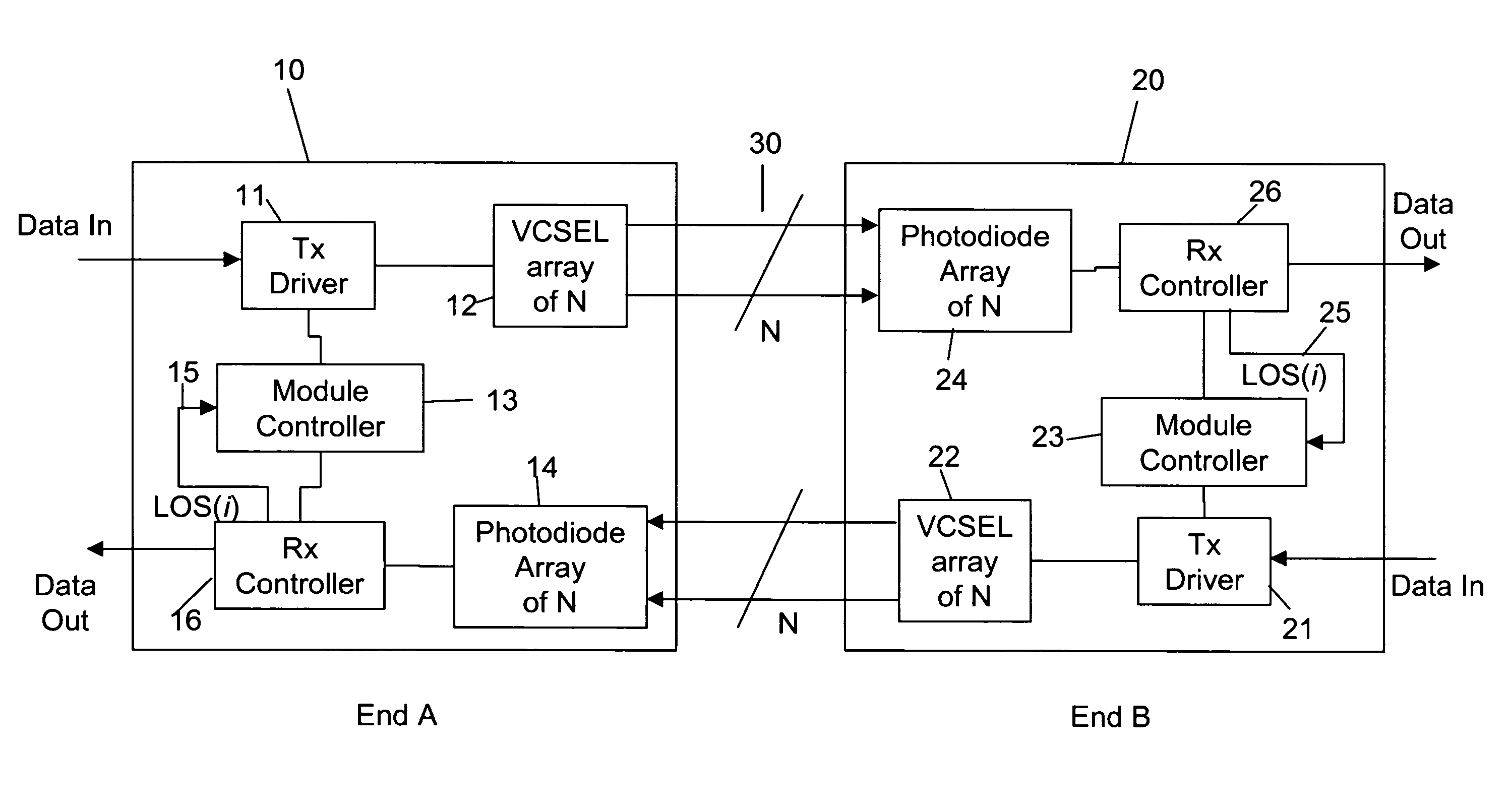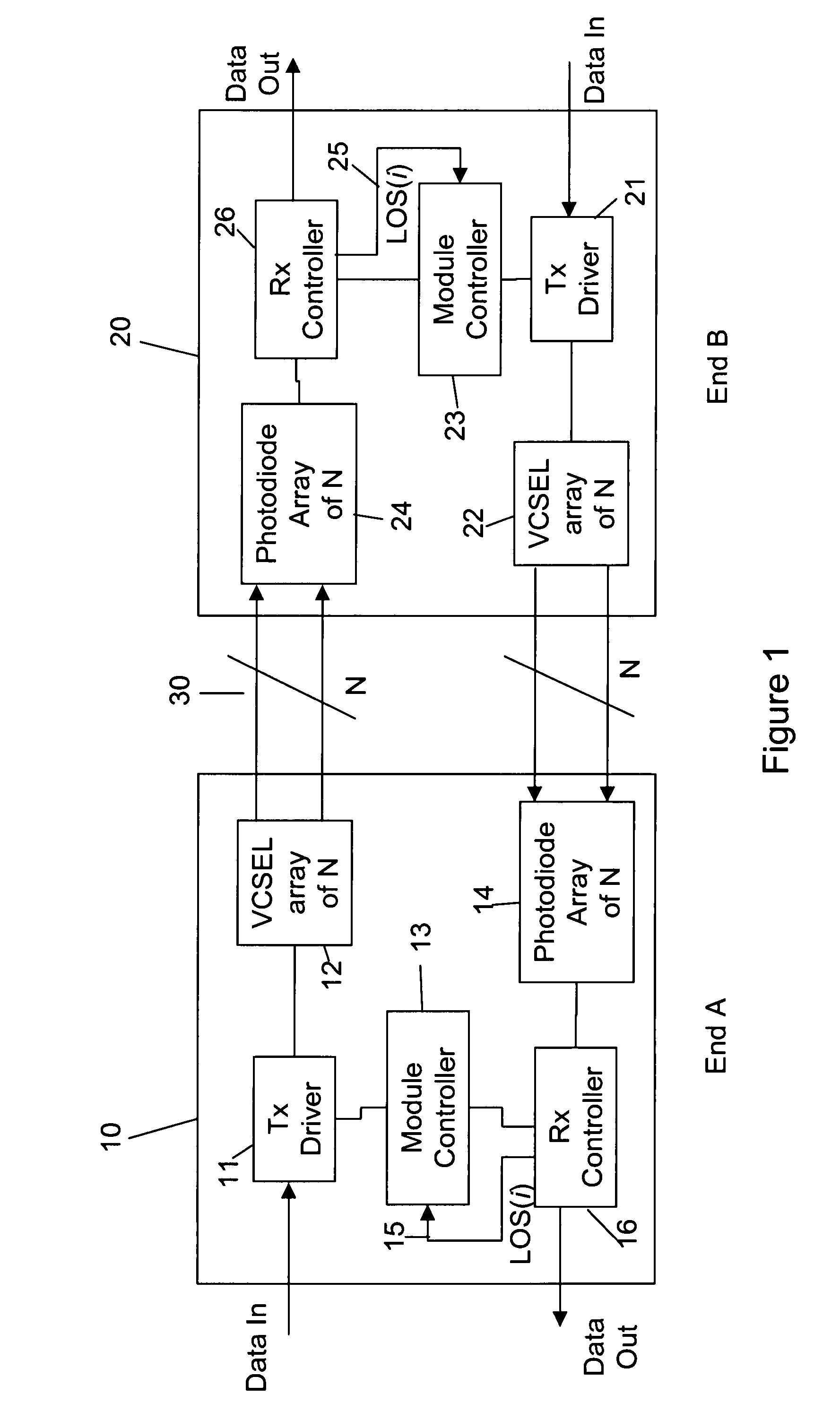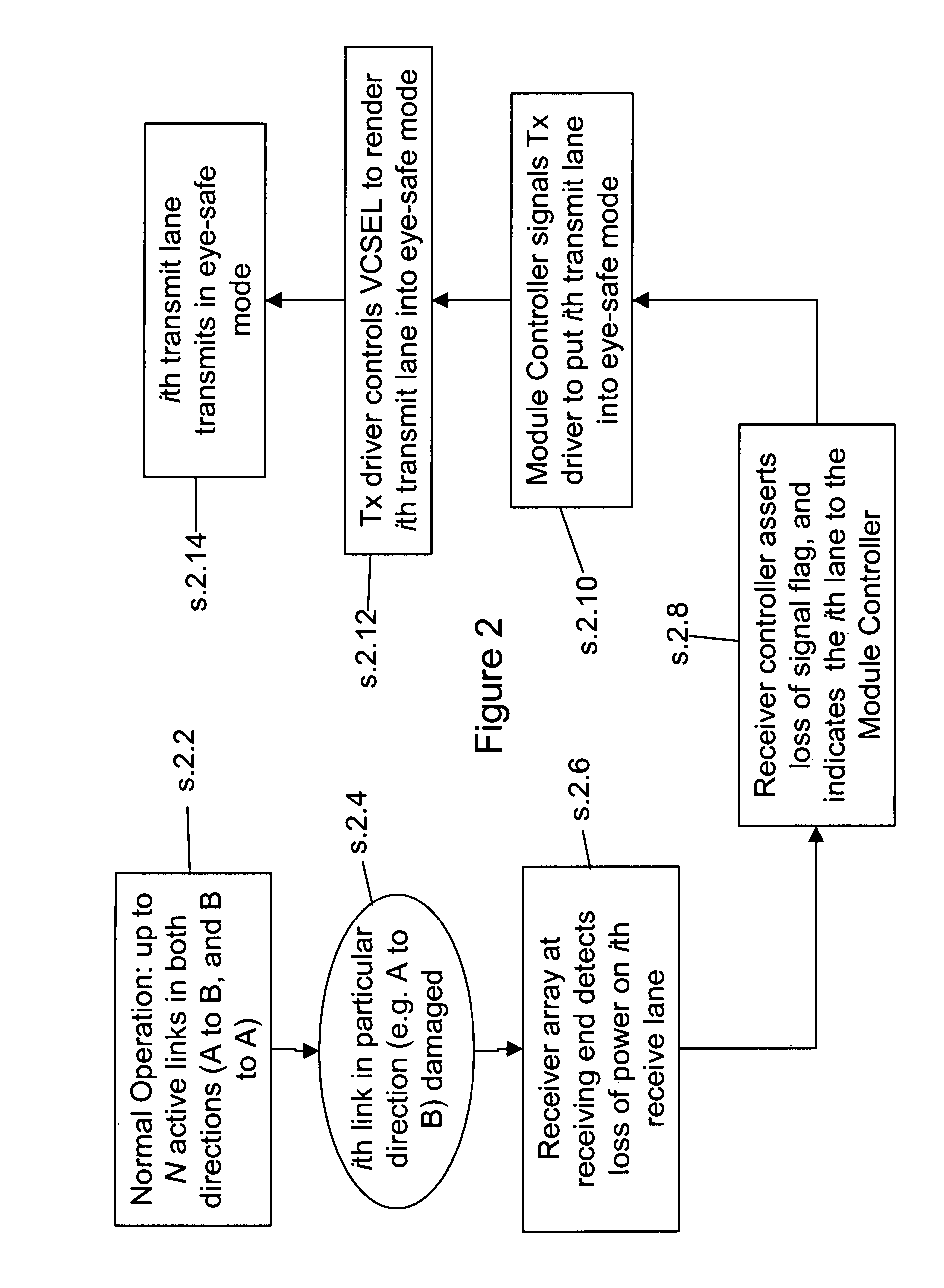Eye safety in electro-optical transceivers
a transceiver and electrooptical technology, applied in electromagnetic transceivers, transmission monitoring/testing/fault measurement systems, transmission monitoring, etc., can solve problems such as exacerbated problems, no accessible optical interface, and difficulty in meeting eye safety standards
- Summary
- Abstract
- Description
- Claims
- Application Information
AI Technical Summary
Benefits of technology
Problems solved by technology
Method used
Image
Examples
Embodiment Construction
[0020]An embodiment of the invention will now be described.
[0021]FIG. 1 is a block diagram illustrating two electro-optical modules according to an embodiment of the invention. A first electro-optical module 10 at end A is connected, via a parallel optical ribbon 30, to a second electro-optical module 20 at end B. The first electro-optical module 10 comprises a VCSEL array 12 comprising N VCSELs arranged in parallel. Also provided is a photodiode array 14, comprising N photodiodes arranged in parallel. A module controller 13 is further provided, as well as a receiver controller 16, arranged to receive signals from the photodiode array. A transmitter driver 11, which controls the VCSEL array is also included.
[0022]The transmitter driver 11 is arranged to receive data in, in the form of an electrical signal, and to control the VCSEL to convert the electrical signal into an optical signal, which is transmitted via the parallel optical fiber 30. Similarly, the parallel optical signal re...
PUM
 Login to View More
Login to View More Abstract
Description
Claims
Application Information
 Login to View More
Login to View More - R&D
- Intellectual Property
- Life Sciences
- Materials
- Tech Scout
- Unparalleled Data Quality
- Higher Quality Content
- 60% Fewer Hallucinations
Browse by: Latest US Patents, China's latest patents, Technical Efficacy Thesaurus, Application Domain, Technology Topic, Popular Technical Reports.
© 2025 PatSnap. All rights reserved.Legal|Privacy policy|Modern Slavery Act Transparency Statement|Sitemap|About US| Contact US: help@patsnap.com



